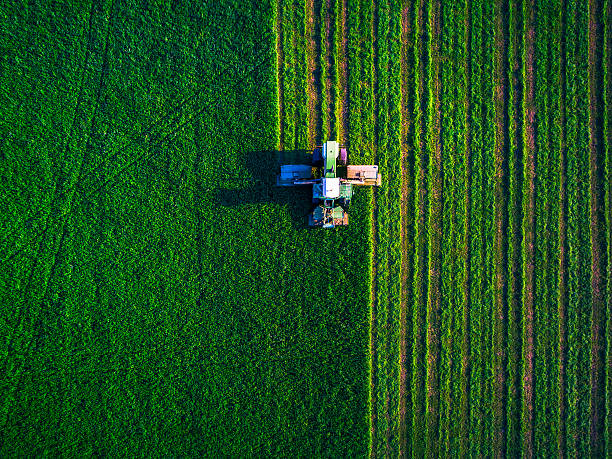Transforming Agribusiness: Digital, Sustainable, Resilient

Q1. Could you begin by providing a brief overview of your professional background, specifically highlighting your expertise in the industry?
My career in agribusiness has taken me through key areas such as seed management, technical field support, and the commercial direction of fertilizer and agrochemical portfolios across Coahuila, Chihuahua, and Durango. This mix of technical and commercial experience has shaped a well-rounded understanding of growers’ needs and regional production dynamics.
As Sales Manager at Agricenter Zevilla, I draw on this background to foster growth by building lasting relationships with growers, aligning our sales strategies with actual market trends, and driving innovation not only in our products, but also in logistics, service, and field support. I believe that true, sustainable growth begins with a deep understanding of the field and the ability to respond quickly and thoughtfully to its evolving needs.
Q2. What strategic priorities and technology investments should banking leaders focus on to transform credit risk management into a competitive advantage and build resilience against financial shocks and regulatory changes?
Today, agribusinesses are navigating a rapidly changing landscape shaped by several key forces:
• Significant price swings in global fertilizer and input markets require us to be more flexible and strategic in how we purchase and manage inventories.
• Changing weather patterns affect when we plant, how we nourish crops, and how we manage pests, making flexible planning more important than ever.
• Growers today are more informed and expect sustainable solutions, carefully compare technologies, and seek clear value from every input they use.
These trends are encouraging companies to become more analytical, stay closely connected with growers, and adapt swiftly to rapid changes in the industry.
Q3. How is the increasing integration of environmental, social, and governance (ESG) factors reshaping credit risk assessment frameworks, and what impact does this have on loan pricing and portfolio diversification strategies?
Digital tools and data analytics now play a central role in how we operate:
• Instead of relying only on intuition, we now use historical data, crop cycles, regional patterns, and price trends to forecast demand.
• Our inventory management is more accurate, allowing us to keep the right amount of stock, balance it across different branches, and prevent shortages or excesses.
• We’re also more agile in setting prices, using real-time information about crop rotations, competition, and what growers value most.
Embracing data has transformed our approach, enabling us to move from reactive adjustments to proactive, informed decision-making.
Q4. How are alternative data and AI-powered credit scoring models enhancing the accuracy and inclusivity of credit risk assessments across retail and corporate portfolios, and what are the main operational and ethical challenges banks face in adopting these technologies?
Recent challenges have highlighted how important it is to have supply chains that are both resilient and efficient. Here’s what has helped us the most:
• Early, diversified procurement to reduce dependency and mitigate volatility.
• Transparent communication with suppliers regarding timelines and potential delays.
• Optimized warehouse and CEDIS operations, improving turnaround times and regional stock allocation.
• Integrated planning between sales, logistics, and finance, ensuring decisions are aligned and grounded in shared information.
By taking this approach, we are able to support growers dependably, even during periods of market instability.\
Q5. Which sectors or borrower segments benefit most from alternative data inclusion, and where do AI models still struggle to provide reliable risk insights?
Sustainability is increasingly central to growers’ decisions, and our role is to support that transition:
• By offering more efficient and lower-impact inputs, such as enhanced-efficiency fertilizers, biostimulants, and more selective crop protection.
• Through responsible, data-backed technical recommendations that reduce waste and increase nutrient-use efficiency.
• By partnering with growers to measure results, improve practices, and strengthen long-term soil and crop health.
• Through alliances with suppliers committed to sustainable innovation.
Sustainability is increasingly becoming a competitive advantage—and a shared responsibility throughout the value chain.
Q6. How are advanced credit risk management frameworks evolving in Indian PSU and private banks to address emerging non-performing asset (NPA) challenges while supporting sustainable loan growth?
Digital platforms are transforming collaboration across the agricultural value chain, and their potential is far from fully realized:
• Automated tools can streamline order planning, deliveries, and customer communication.
• Real-time field data can help growers optimize inputs, monitor crop status, and adjust decisions faster.
• Sales teams can leverage digital tools to capture field intelligence, forecast demand more accurately, and provide more personalized support.
• Fully integrated systems—connecting CRM, inventory, and operations—can enhance traceability, transparency, and decision speed.
The next major leap in agricultural efficiency will be driven by digital connectivity.
Q7. If you were an investor looking at companies within the space, what critical question would you pose to their senior management?
Looking ahead, I see major opportunities in:
- Seeds: genetics designed for heat tolerance, water stress, and specific regional conditions—highly relevant for northern Mexico.
- Fertilizers: enhanced-efficiency technologies, biological and hybrid solutions, and products that align with sustainability metrics.
- Digital enablement: practical, accessible tools that turn agronomic data into actionable, profitable decisions for growers.
Companies that successfully combine product innovation, digital insights, and robust technical support will be at the forefront of the next phase in agricultural transformation.
Comments
No comments yet. Be the first to comment!
